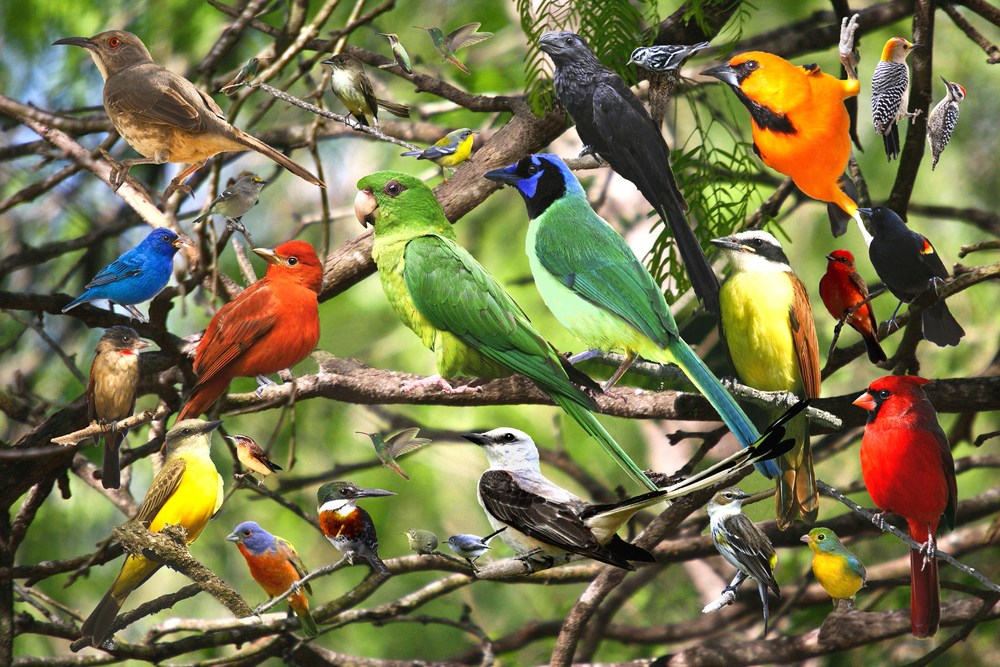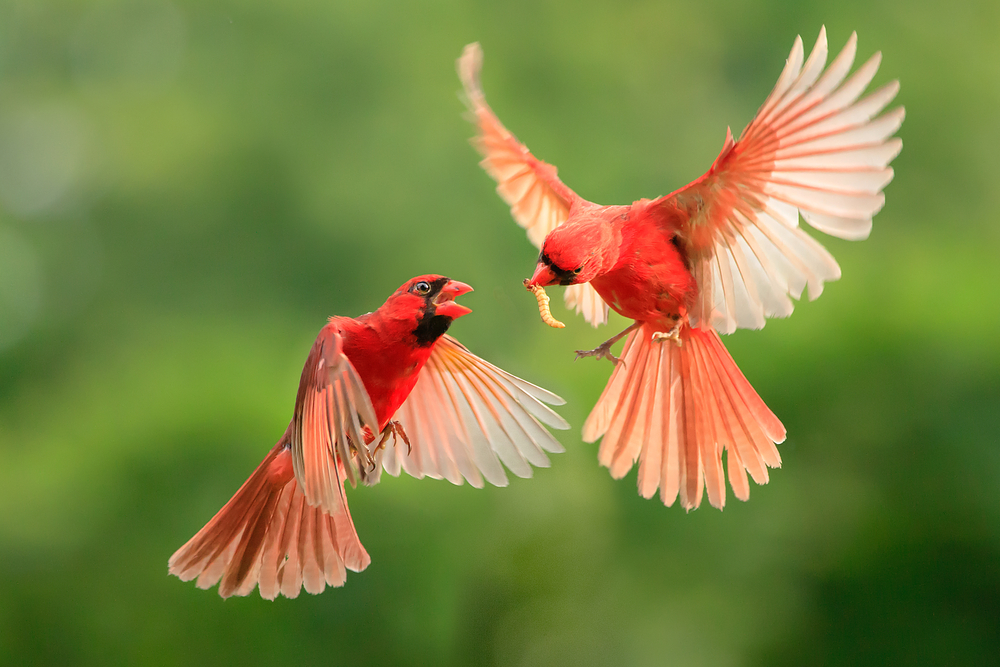Are birds mammals or reptiles? The question has puzzled many people, and the answer is not as straightforward as you might think. To understand the answer, you need to have a basic understanding of animal classification and the characteristics that define birds, mammals, and reptiles.
Animal classification is the process of categorizing animals based on their physical and genetic characteristics. It is an essential tool for scientists to study and understand the diversity of life on Earth. Birds, mammals, and reptiles are three basic animal groups. Birds are unique in that they have feathers, while mammals are characterized by their mammary glands and hair or fur. Reptiles, on the other hand, are cold-blooded and have scales or bony plates.
So, are birds mammals or reptiles? The answer is neither. Birds are a separate class of animals known as Aves, while mammals and reptiles belong to Mammalia and Reptilia, respectively. While birds share some characteristics with both mammals and reptiles, they have unique features that set them apart. In the following sections, we will explore the defining characteristics of birds, mammals, and reptiles, and compare and contrast them to better understand where birds fit in the animal kingdom.
Key Takeaways
- Animal classification is the process of categorizing animals based on their physical and genetic characteristics.
- Birds, mammals, and reptiles are three of the six basic animal groups.
- Birds are a separate class of animals known as Aves, while mammals and reptiles belong to the classes Mammalia and Reptilia, respectively.
Understanding Animal Classification

When it comes to understanding whether birds are mammals or reptiles, it’s important first to understand animal classification. Animal classification is categorizing animals into groups based on their characteristics and traits. This system helps scientists and researchers better understand and study the vast diversity of the animal kingdom.
Animals are divided into two main groups: vertebrates and invertebrates. Vertebrates are animals with a backbone, while invertebrates do not. Birds are vertebrates, mammals, reptiles, amphibians, and fish.
Within the vertebrate group, animals are divided into five subdivisions: fish, amphibians, reptiles, birds, and mammals. This subdivision is based on the animal’s characteristics and traits, such as their reproductive system, body temperature, and skin type.
It’s important to note that the classification of animals is not always straightforward. For example, birds share some characteristics with reptiles, such as laying eggs and having scales on their legs. However, birds also have unique characteristics, such as feathers and a beak, that set them apart from reptiles.
In summary, animal classification is a complex system that helps us better understand the vast diversity of the animal kingdom. Birds are classified as vertebrates, along with mammals, reptiles, amphibians, and fish. Within the vertebrate group, animals are further divided into five subdivisions based on their characteristics and traits.
Defining Birds

When it comes to defining birds, the first thing that comes to mind is their unique feature – feathers. Birds are the only animals with feathers, made of keratin protein. Feathers serve several purposes, including insulation, waterproofing, and, of course, flight. The ability to fly is a defining characteristic of birds, although not all bird species can fly.
Another important feature of birds is their wings. Birds have forelimbs that are modified into wings, which are used for flying, gliding, and hovering. Their wings are designed to generate lift and provide stability during flight. In addition to wings, birds have beaks, which are specialized for different types of food. Some birds have long, thin beaks for probing into flowers to extract nectar, while others have sharp, hooked beaks for tearing apart prey.
Birds are warm-blooded vertebrates, which means they maintain a constant body temperature regardless of their surroundings. Like mammals, they have a four-chambered heart, which allows for efficient blood oxygenation. Birds also have excellent vision, which is necessary for navigating during flight and finding food.
Each species has unique characteristics, such as their size, coloration, and behavior. Some birds have a high metabolic rate, allowing them to fly continuously for hours or even days without stopping. Others have adapted for long-distance migration, traveling thousands of miles yearly between breeding and wintering grounds.
In summary, birds are a diverse group of animals characterized by their feathers, wings, and flight. They have a four-chambered heart, excellent vision, and specialized beaks for different types of food.
Defining Mammals
Mammals are a diverse group of animals that share several defining characteristics. As you may already know, mammals are warm-blooded animals that have hair or fur, produce milk to feed their young, and give birth to live young.
One of the most distinctive features of mammals is their hair or fur. This is a unique characteristic that sets them apart from other animals. Hair or fur provides insulation, which helps to regulate body temperature and keep mammals warm in cold environments. In addition, hair or fur can also serve as a form of camouflage or protection against predators.
Another defining characteristic of mammals is their ability to produce milk to feed their young. This unique adaptation allows mammals to give their offspring the nutrients they need to grow and develop. The milk produced by mammals contains a variety of essential nutrients, including protein, fat, and carbohydrates, as well as vitamins and minerals.
Mammals also give birth to live young, which is another unique characteristic. Unlike reptiles and birds, which lay eggs, mammals carry their offspring inside their bodies until they are fully developed. This allows mammals to provide their young with a safe and protected environment to grow and develop.
Overall, mammals are a fascinating and diverse animal group with several unique characteristics. From their warm-blooded nature to their ability to produce milk and give birth to live young, mammals are truly remarkable creatures.
Defining Reptiles
Reptiles are a class of cold-blooded vertebrates that are characterized by their scaly skin and amniotic eggs. They are ectothermic, meaning that their body temperature is regulated by the environment around them rather than by internal processes.
Living reptiles comprise four orders: Testudines (turtles), Crocodilia (crocodiles, alligators, and caimans), Squamata (lizards and snakes), and Rhynchocephalia (the tuatara). All reptiles have scales made of keratin, the same material that makes up human hair and nails. These scales help to protect the reptile’s skin from damage and dehydration.
Crocodiles and alligators are examples of reptiles with tough, scaly skin that provides excellent protection from predators. Turtles are another example of a reptile with a hard, protective shell that covers their body. On the other hand, Lizards and snakes have more flexible skin that allows them to move more easily.
One of the defining characteristics of reptiles is that they lay amniotic eggs, which are surrounded by a membrane that helps to protect the developing embryo. This adaptation allowed reptiles to move away from water and colonize new habitats, as they no longer needed to lay their eggs in water to keep them moist.
In summary, reptiles are cold-blooded vertebrates with scaly skin and amniotic development. They are ectothermic and lay amniotic eggs, and living reptiles comprise four orders: turtles, crocodiles, lizards, and snakes.
Birds Vs Mammals

When it comes to classifying animals, birds and mammals share some similarities, but they also have some key differences. Here are some of the main differences between birds and mammals:
Feathers vs Hair
One of the most obvious differences between birds and mammals is that birds have feathers, while mammals have hair. Feathers are unique to birds and are used for flight, insulation, and display. Hair, on the other hand, is found on all mammals and is used for insulation, protection, and sensory purposes.
Warm-bloodedness
Both birds and mammals are warm-blooded, which means that they can regulate their body temperature internally. This allows them to live in a wide range of environments and climates.
Flight
While some mammals, like bats, are capable of flight, birds are the only animals that can fly with true powered flight. Their wings are specially adapted for this purpose, with lightweight bones and strong muscles that allow them to generate lift and maneuver in the air.
Forelimbs
Another key difference between birds and mammals is in their forelimbs. Birds have forelimbs that are modified into wings, while mammals have forelimbs that are adapted for a variety of purposes, such as grasping, running, or swimming.
In conclusion, while birds and mammals share some similarities, they also differ significantly. Birds have feathers, can fly, and have forelimbs adapted for flight, while mammals have hair, are warm-blooded and have forelimbs adapted for various purposes.
Birds Vs Reptiles
When it comes to birds and reptiles, some key differences set them apart. Here are some of the main characteristics that distinguish birds from reptiles:
Feathers vs Scales
One of the most obvious differences between birds and reptiles is their skin covering. Birds are the only animals on the planet that have feathers, while reptiles have scales. Feathers are unique to birds and serve a variety of functions, including insulation, flight, and display. Scales, on the other hand, are used by reptiles for protection and to retain moisture.
Flight vs No Flight
Another major difference between birds and reptiles is that birds are capable of flight, while reptiles are not. Birds have evolved lightweight, aerodynamic bodies and mighty wings to soar through the air. Reptiles, on the other hand, are generally slow-moving and do not have the adaptations necessary for powered flight.
Gills vs Lungs
While some reptiles, such as turtles and crocodiles, can hold their breath for extended periods, they still rely primarily on lungs to breathe. On the other hand, birds have evolved a unique respiratory system that allows them to extract oxygen more efficiently from the air. This system includes air sacs that store and circulate air throughout the body and a series of tiny tubes called parabronchi that allow for a continuous flow of oxygen.
Shells vs No Shells
Many reptiles, such as turtles and tortoises, have hard, protective shells that cover their bodies. Birds, on the other hand, do not have shells. Instead, they have lightweight, hollow bones that help to reduce their weight and make flight possible.
In summary, birds and reptiles have many differences that set them apart, including their skin covering, ability to fly, respiratory system, and body structure. While both groups of animals are vertebrates and share some similarities, they have evolved to occupy very different niches in the animal kingdom.
Evolutionary Perspective
When it comes to classifying birds, their evolutionary history plays a significant role. Birds are believed to have evolved from small carnivorous dinosaurs during the Mesozoic era, around 150 million years ago. This evolutionary link between birds and dinosaurs has been established through a combination of fossil evidence and genetic analysis.
The discovery of fossils from China, South America, and other countries has provided valuable insights into the evolution of birds. These fossils have revealed that birds evolved from theropod dinosaurs, a group of bipedal carnivores that also included the famous Tyrannosaurus rex.
The ancestral bird, Archaeopteryx, is considered to be the first bird that evolved from theropod dinosaurs. Archaeopteryx had feathers and wings like birds but also retained some features of its dinosaur ancestors, such as teeth and a long tail. This transitional fossil provides strong evidence for the evolutionary link between birds and dinosaurs.
The evolution of birds from dinosaurs was a gradual process that took millions of years. During this time, birds developed many unique features that distinguish them from their reptilian ancestors. For example, birds evolved a lightweight skeleton, a beak instead of teeth, and the ability to fly.
In summary, birds evolved from small carnivorous dinosaurs during the Mesozoic era. This evolutionary link has been established through a combination of fossil evidence and genetic analysis. The ancestral bird, Archaeopteryx, provides strong evidence for the evolutionary link between birds and dinosaurs. The evolution of birds from dinosaurs was a gradual process that took millions of years and resulted in many unique features that distinguish birds from their reptilian ancestors.
Other Animal Groups
Aside from birds, there are several other animal groups that you may be curious about. Here is a brief overview of some of these groups:
Fish
Fish are aquatic animals that breathe through gills and have fins for swimming. They are cold-blooded and lay soft-shelled eggs. There are two main types of fish: bony fish and cartilaginous fish, such as sharks.
Amphibians
Amphibians are cold-blooded animals that can live both on land and in water. They have a soft, moist skin and lay their eggs in water. Some examples of amphibians include frogs and salamanders.
Insects
Insects are a diverse group of animals that have three body segments, six legs, and wings. They are cold-blooded and lay hard-shelled eggs. Some common insects include butterflies, ants, and bees.
Terrestrial Animals
Terrestrial animals are animals that live primarily on land. They can be warm-blooded or cold-blooded and can lay either hard-shelled or soft-shelled eggs. Examples of terrestrial animals include mammals, reptiles, and birds.
Hard-Shelled Eggs
Some animals, such as birds and reptiles, lay hard-shelled eggs. These eggs are protected by a hard outer shell that helps to prevent damage and dehydration.
Owl
Owls are birds of prey that are known for their excellent eyesight and ability to fly silently. They are active at night and have feathers that are specially adapted for silent flight. Owls are carnivores and primarily eat small mammals like mice and rats.
Conclusion
After examining the characteristics and classification of birds, it is clear that they are not mammals. While birds and mammals share some similarities, such as being warm-blooded and having a four-chambered heart, birds are separate animals with unique features such as feathers and wings.
Furthermore, birds are not reptiles either. While they share some similarities with reptiles, such as being cold-blooded and laying eggs, birds have evolved distinct traits that set them apart from reptiles.
It is important to note that while birds are not mammals or reptiles, they are still an important and diverse group of animals. With over 10,400 living species, birds can be found in nearly every environment on Earth, from the bone-dry deserts of the American Southwest to the lush rainforests of the Hn European countries.
Whether you are a birdwatcher, biologist, or just someone who appreciates the beauty and diversity of the natural world, birds are a fascinating and important group of animals that are well worth studying and protecting.
For More Info : https://www.audubon.org/
What class of animal do birds belong to?
Birds belong to the class Aves, which is a group of warm-blooded, egg-laying, feathered vertebrates. They are distinct from other classes of animals such as mammals, reptiles, and amphibians.
Are birds warm-blooded?
Yes, birds are warm-blooded animals, so their body temperature is regulated internally. This allows them to maintain a constant body temperature even in extreme weather conditions.
Do birds lay eggs like reptiles?
Yes, birds lay eggs, but their reproductive system is different from that of reptiles. Birds have a unique reproductive system that allows them to form and lay eggs that are covered in a hard shell.
What are the characteristics of birds?
Birds have several unique characteristics that set them apart from other animals. They have feathers used for flight, insulation, and display. They also have a lightweight skeleton, a beak, and a unique respiratory system that allows them to fly.
What is the difference between birds and reptiles?
Birds and reptiles share some similarities, such as being cold-blooded and laying eggs. However, birds have several unique characteristics that distinguish them from reptiles. Birds have feathers, beaks, and a unique respiratory system that allows them to fly.
Are birds more closely related to mammals or reptiles?
Birds are more closely related to reptiles than to mammals. Both birds and reptiles are classified as sauropsids, which means that they share a common ancestor. Mammals, on the other hand, are classified as synapsids and have a different evolutionary history.